Hummingbirds astound almost every bird lover with their vibrant colors, impressive wing speed, and an overall unique look. It’s no wonder that gardeners and homeowners all over the country try to lure these majestic creatures to their yards by adding unique feeders and plants to attract them. Surprisingly, some of the best flowers for hummingbirds are also the most common and make stunning additions to any landscape.
So, where do you start with planting a hummingbird-friendly garden? There are several types of plants from which hummingbirds love to drink. They love the sweet nectar from flowers like Hyssop, Honeysuckle, and Impatiens.
Beyond the plant species, there are different feeders and specific colors to add around your yard to draw in these little hummers even more. Check out our information about attracting hummingbirds with some of your favorite flowers and techniques.
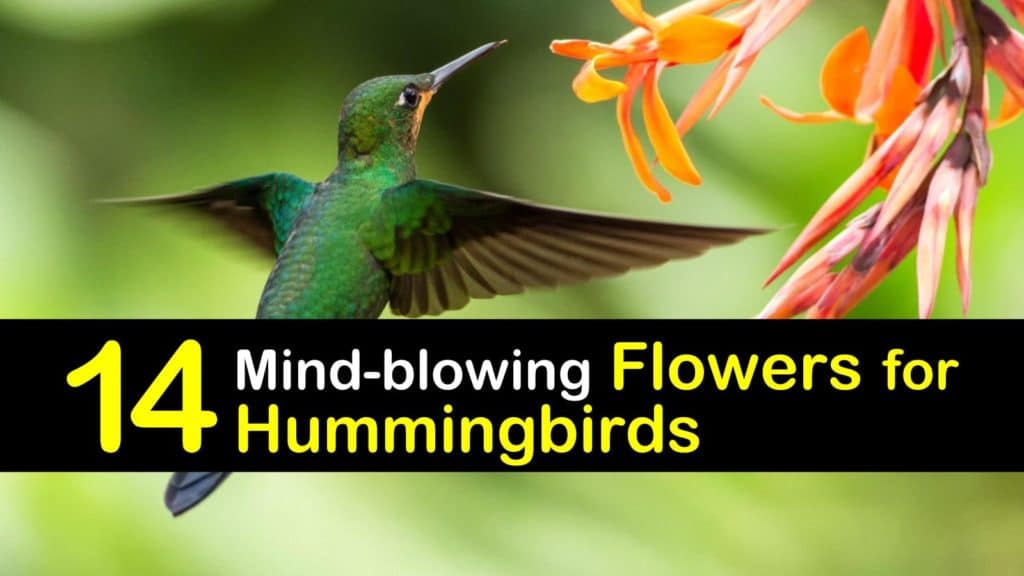
- Advice for Planting Flowers to Attract Hummingbirds
- Incredible Flowering Plants that Attract Hummingbirds
- Common Sage (Salvia Officinalis)
- Cardinal Flower (Lobelia cardinalis): Bright Red Flowers Attract Hummingbirds
- Bearded Tongue (Penstemon digitalis)
- Trumpet Honeysuckle (Lonicera sempervirens)
- Hyssop (Agastache foeniculum): Best Flowers for Hummingbirds
- Bee Balm (Monarda)
- Plantain Lily (Hostas) for Dainty, Nectar-Filled Flowers
- Butterfly Bush (Buddleia davidii)
- Trumpet Creeper (Campsis radicans)
- Coral Bells (Heuchera): Beautiful Foliage and Flowers
- Impatiens (Impatiens walleriana)
- Columbine (Aquilegia): Delicate Flowers Abundant with Nectar
- Phlox (Phlox paniculata)
- Hardy Fuchsia (Fuchsia magellanica): Tropical Flowers with Stunning Pops of Color
Advice for Planting Flowers to Attract Hummingbirds
Before starting, it is critical to note the things that draw hummingbirds to your home in the first place. It is equally important to recognize their role in the ecosystem and why bringing them out makes a world of difference.
Why is attracting hummingbirds important?
Hummingbirds provide a tremendous aesthetic value for homeowners. Who doesn’t love watching these beautiful little birds float from plant to plant? However, they also provide a significant role in maintaining the plant population and keeping it thriving.
Hummingbirds are pollinators, which means they contribute to creating new plants by transporting pollen from one plant to another.
Around 75% of the world’s plants rely on pollinators like bees, hummingbirds, and butterflies to assist with spreading around this pollen. So, while they generate an appeal based on their beauty alone, these tiny birds also do amazing things for the environment.
In addition to hummingbirds, there are many other shrubs for birds of other types, too. Some have attractive and nutritious berries that birds enjoy and others offer shelter and a place to nest.
What else attracts hummingbirds?
Hummingbirds love nectar, which feeders replicate with nothing more than sugar and water. This key ingredient is the main thing that attracts hummingbirds, so planting the right flowers makes a huge difference. To make your own nectar, use a homemade hummingbird food recipe with a 4:1 ratio of water to regular white sugar.
If you have a hummingbird feeder or two in the yard, along with attractive flowers, ants may become a problem, as they like the nectar, too. Keep ants away from a hummingbird feeder with an ant moat.
However, another thing that attracts hummingbirds is the color red. Whether this means adding red feeders, red ribbons, or selecting red flowers, the color alone is sometimes enough to attract them.

When selecting plants from the list below, choose the red version of the species for maximum impact.
Incredible Flowering Plants that Attract Hummingbirds
When choosing these hummingbird-attracting plants, select ones that also work well for your climate. Hummingbirds are also shy creatures, so it may take a little time before you notice them fluttering about from flower to flower.
Common Sage (Salvia Officinalis)
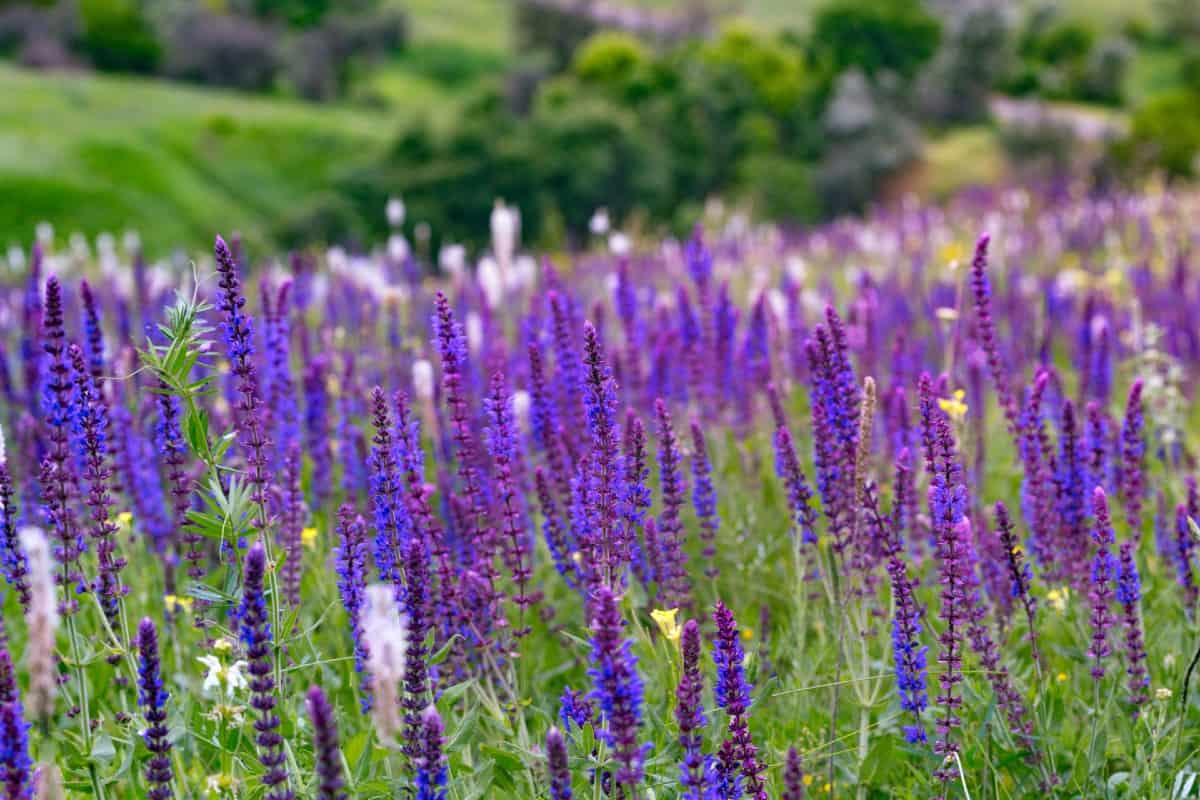
The high nectar count in sage makes it one of the best attractors for pollinators of all kinds. Even Wild Sage from the Lantana family attracts hummingbirds to gardens due to its similar characteristics.
While red sages attract hummingbirds the most, all colors do an incredible job of drawing these dainty creatures to gardens. Sage loves sunlight, so placing it in an area with full sun is ideal.
Keeping the soil moist and well-drained is imperative to it thriving. While diseases are not a common issue for sage, regular weeding helps keep the plant safe and healthy.
Cardinal Flower (Lobelia cardinalis): Bright Red Flowers Attract Hummingbirds
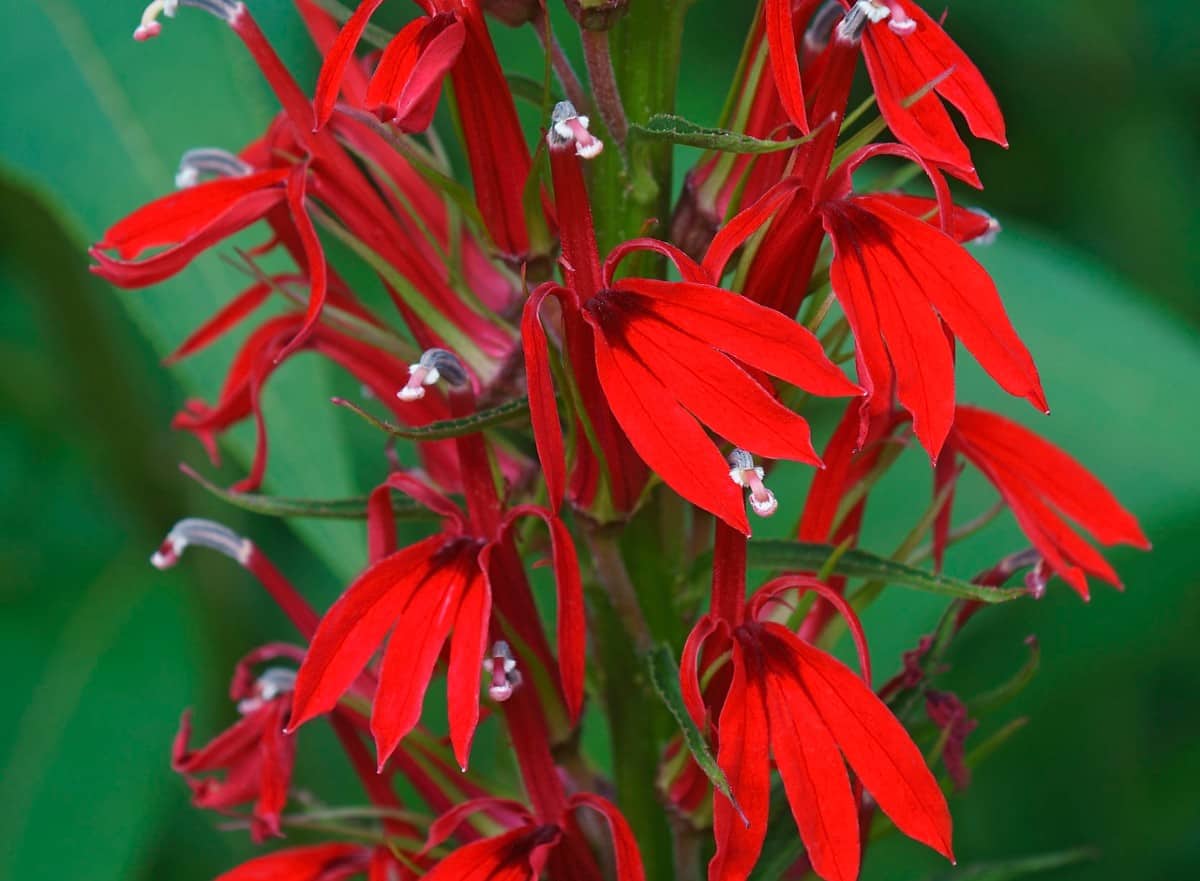
Much like the vibrant little birds it shares a name with, the Cardinal flower displays bright red flowers that hummingbirds love. A member of the lobelia plant family, this perennial flower blooms over several weeks starting in late summer and can reseed itself once established.
This plant is especially appealing to the Ruby-Throated Hummingbird. To maintain it, provide the plant with some light shade and plenty of moisture. Some even like water so well that they thrive along river bends.
Bearded Tongue (Penstemon digitalis)
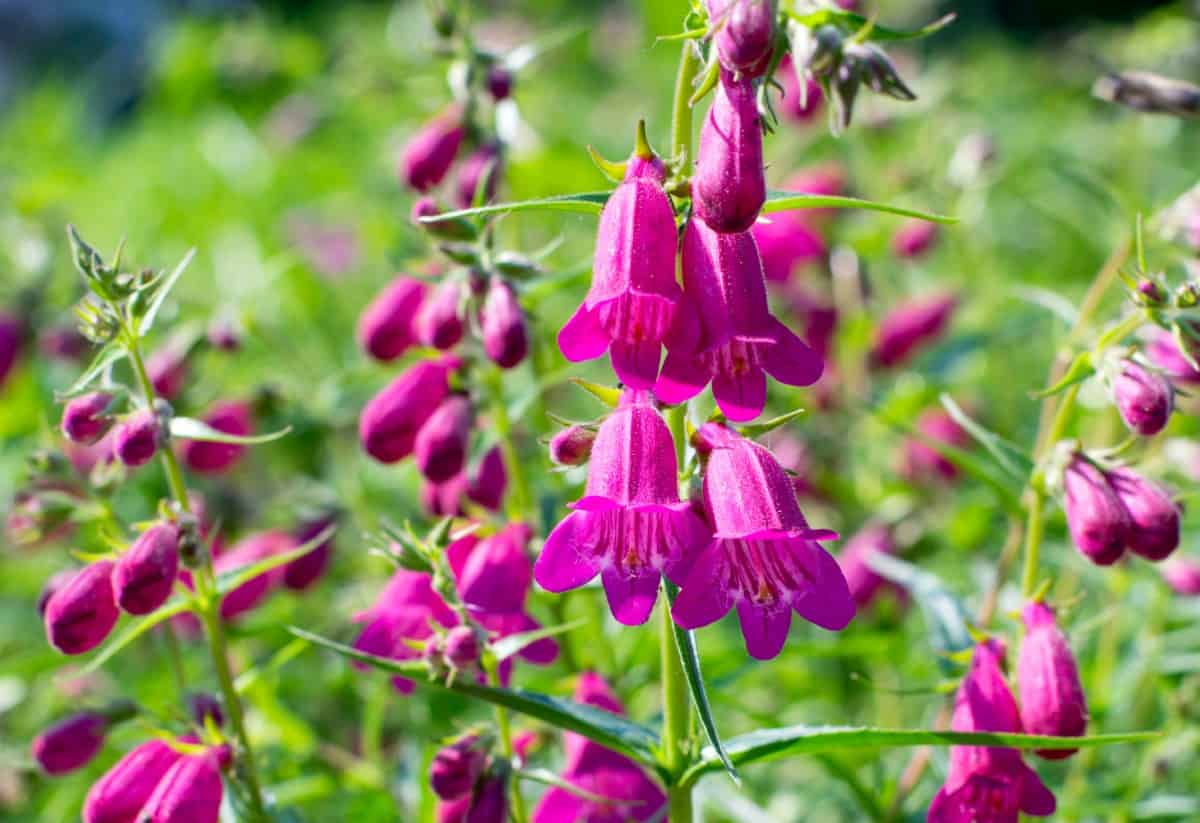
Penstemon, like Sage, comes in many different colors, among which is the color red. The plant looks similar to Foxglove but is relatively harmless to animals, unlike the poisonous plant it resembles. Its tubular flowers and lovely colors make them prime targets for hungry hummingbirds.
In addition to attracting pollinators, Bearded Tongue is also drought tolerant. They are relatively low-maintenance and only need pruning as the flowers begin to die back.
Trumpet Honeysuckle (Lonicera sempervirens)
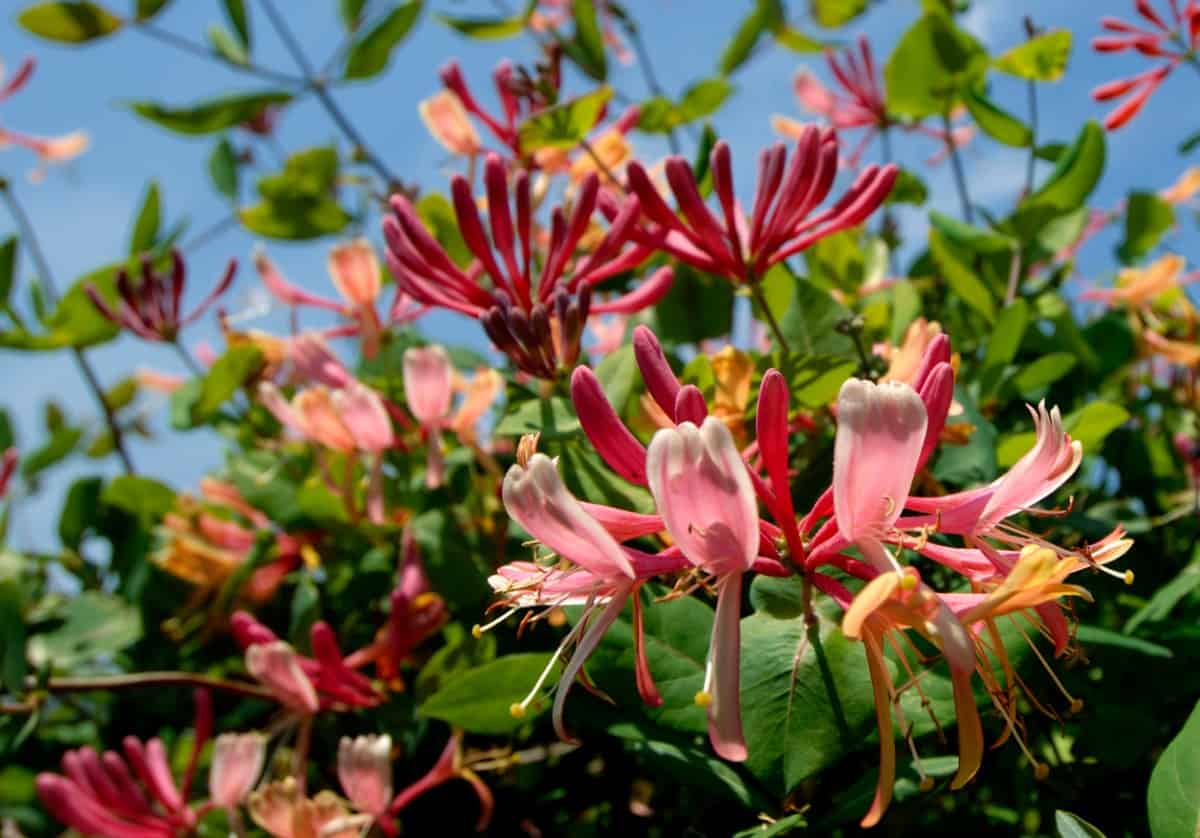
Trumpet Honeysuckle are plants that attract hummingbirds because they provide ideal feeding conditions for the tiny fliers. Not only do they display warm, bright hues like red and orange and have high nectar content, but their shape also makes it easy for them to lap up the sugary syrup.
While these flowering plants are generally easy to take care of, they grow best in milder climates, such as those found in zones 4 and 5. The plant requires at least four hours of sunlight, though it survives in both full sun and partial shade.
Hyssop (Agastache foeniculum): Best Flowers for Hummingbirds
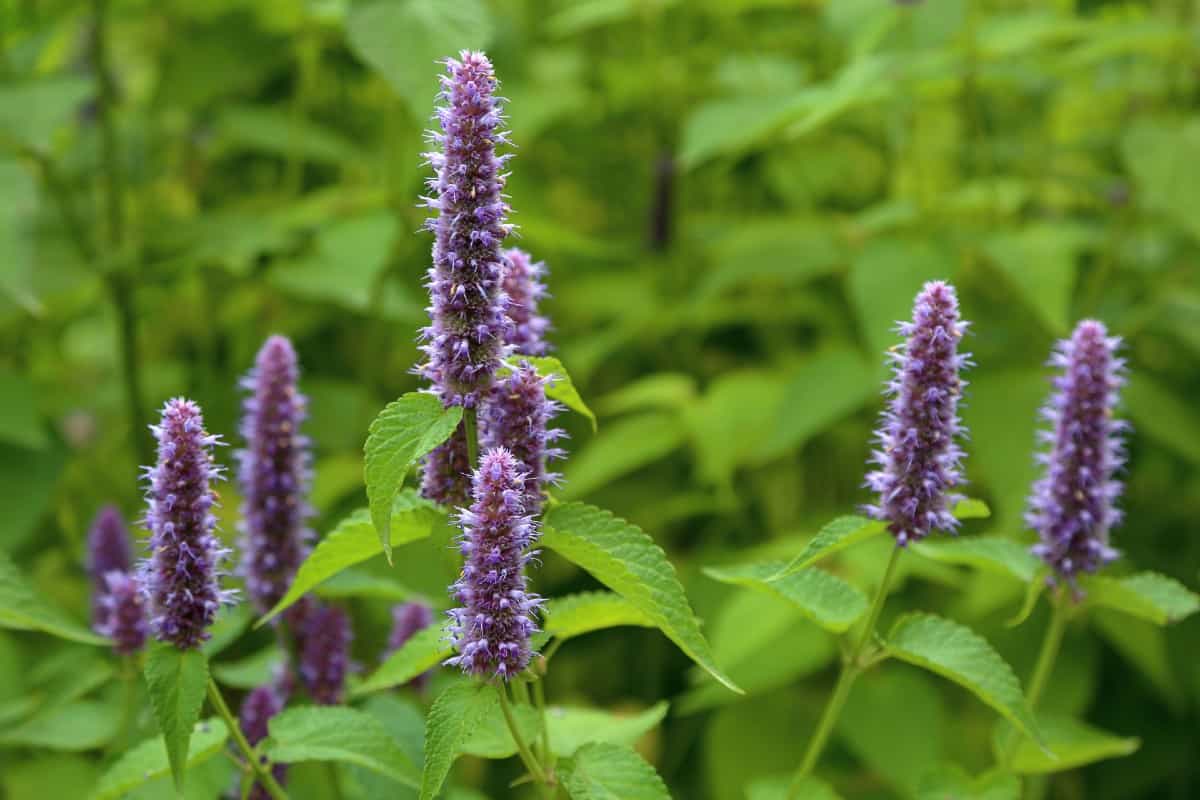
Hyssop is another group of hummingbird flowers that belong to the mint family. There are many different species within the group of plants, which makes it easy to find one that suits your location and climate.
The shape is the biggest draw for these plants, possessing similar qualities as other tubal plants. Pruning is not necessary with Hyssop.
Instead, the critical step to take is watering. Allow the soil to dry out between waterings, but soak it thoroughly during the watering itself.
Bee Balm (Monarda)
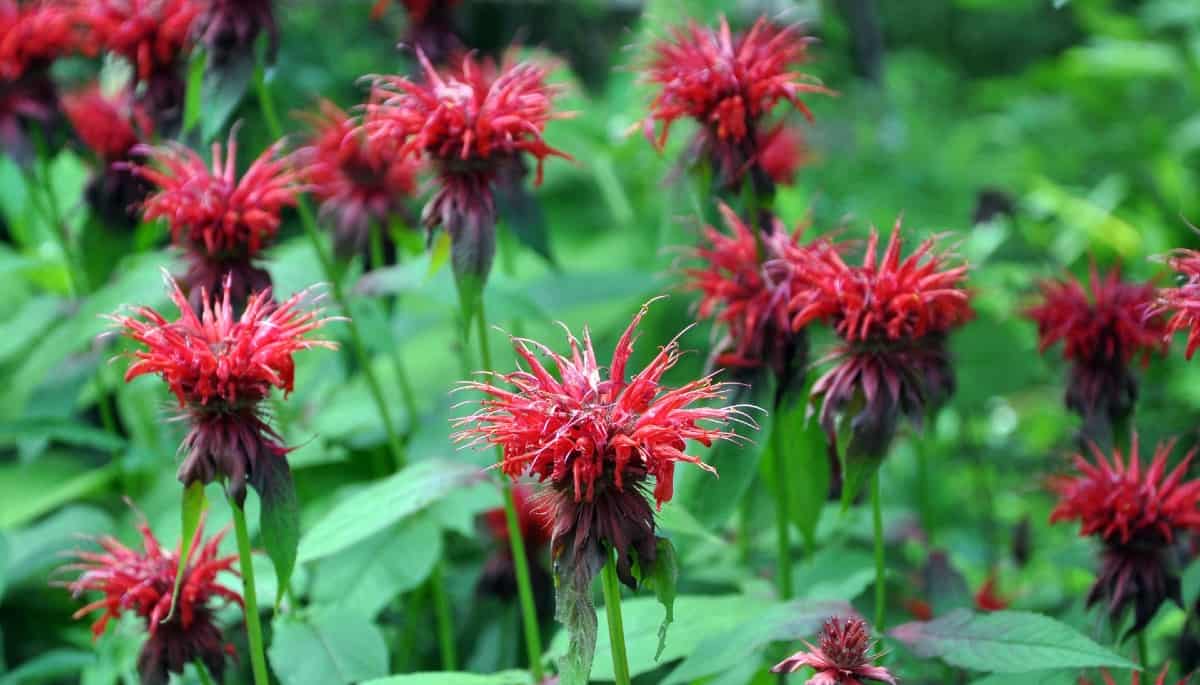
Bee Balm gets its name from the allure it has for bees. However, it attracts many different pollinators, hummingbirds among them. The plant produces little pink, white, or red flowers, emphasizing the red that draws in the hummers.
These native plants smell either like mint or basil and grow up to four feet in height. They prefer full sun conditions, though it is best to provide them with morning or midday sun to prevent scorching.
Plantain Lily (Hostas) for Dainty, Nectar-Filled Flowers
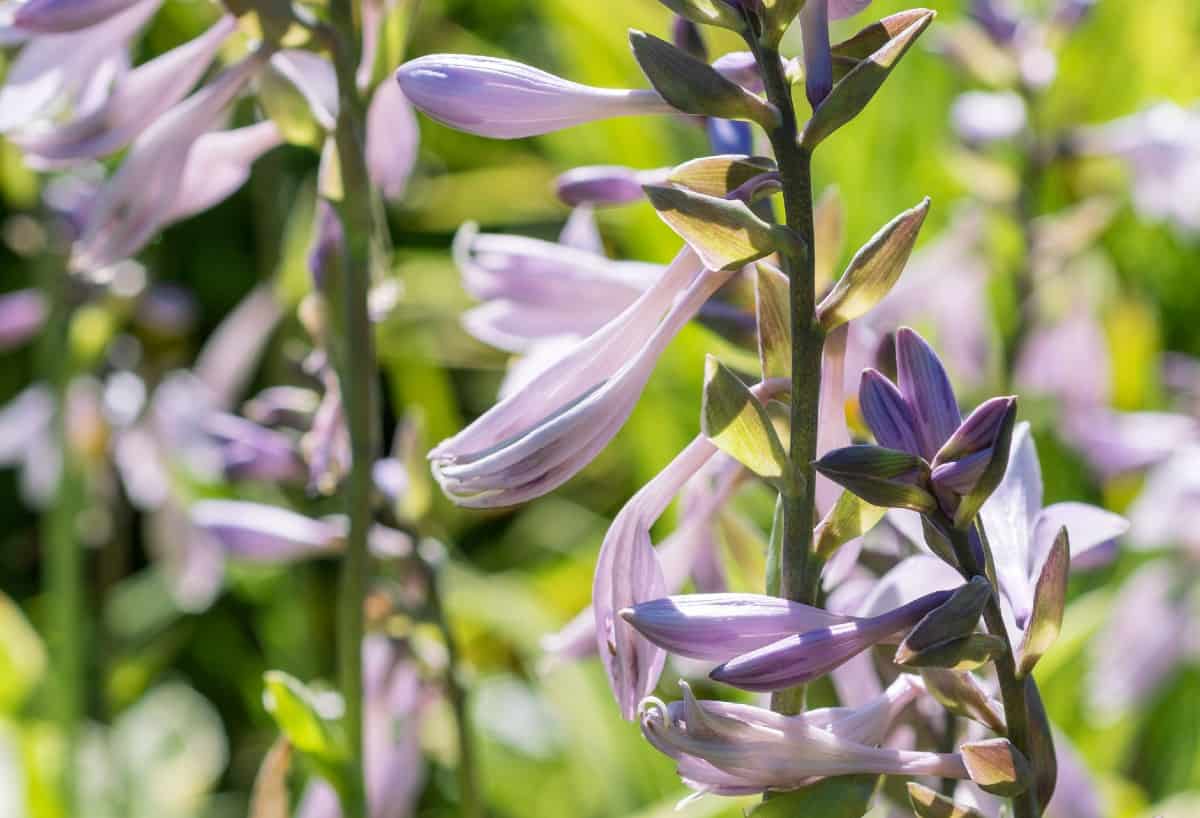
Many list the petunia as a viable lure for hummingbirds. However, the better alternative to these plants is to grow a Hosta like Plantain Lilies. These plants produce delicate, nectar-filled flowers that blossom for up to six weeks.
Hostas prefer shade, though the amount of sunlight they enjoy varies depending on their exact species. These plants thrive in most soils, with a preference toward slightly acidic levels.
Butterfly Bush (Buddleia davidii)
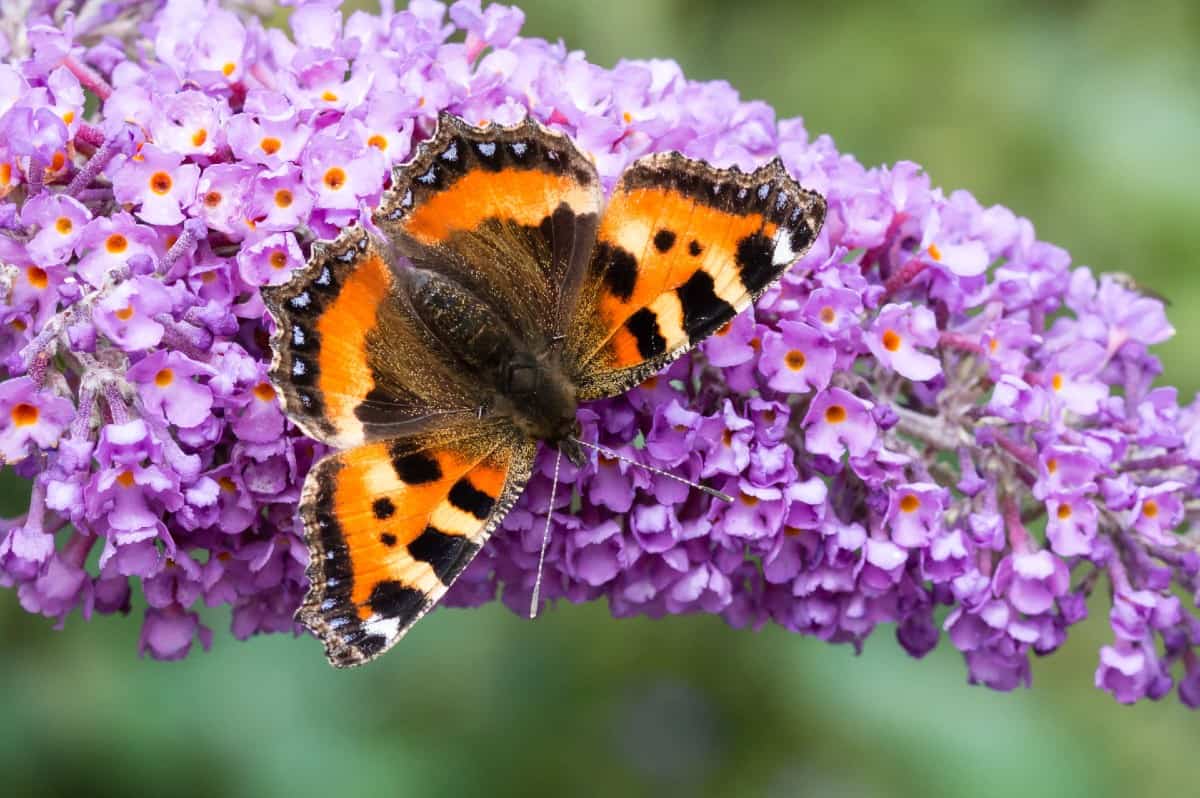
Similar to other flowers, the Butterfly Bush appeals to hummingbirds due to its shape and color. The plant looks comparable to lilac with clusters of flowers that form into a cone-shaped spike.
True to its name, along with hummingbirds, the flowering plant also attracts butterflies. Butterfly Bush grows throughout zones 5-9, favoring the cooler weather.
The amount of sun depends highly on location. In colder areas, full sun is ideal. In warmer climates, however, giving these perennials that flower all season a little bit of shade prevents unnecessary withering.
Trumpet Creeper (Campsis radicans)
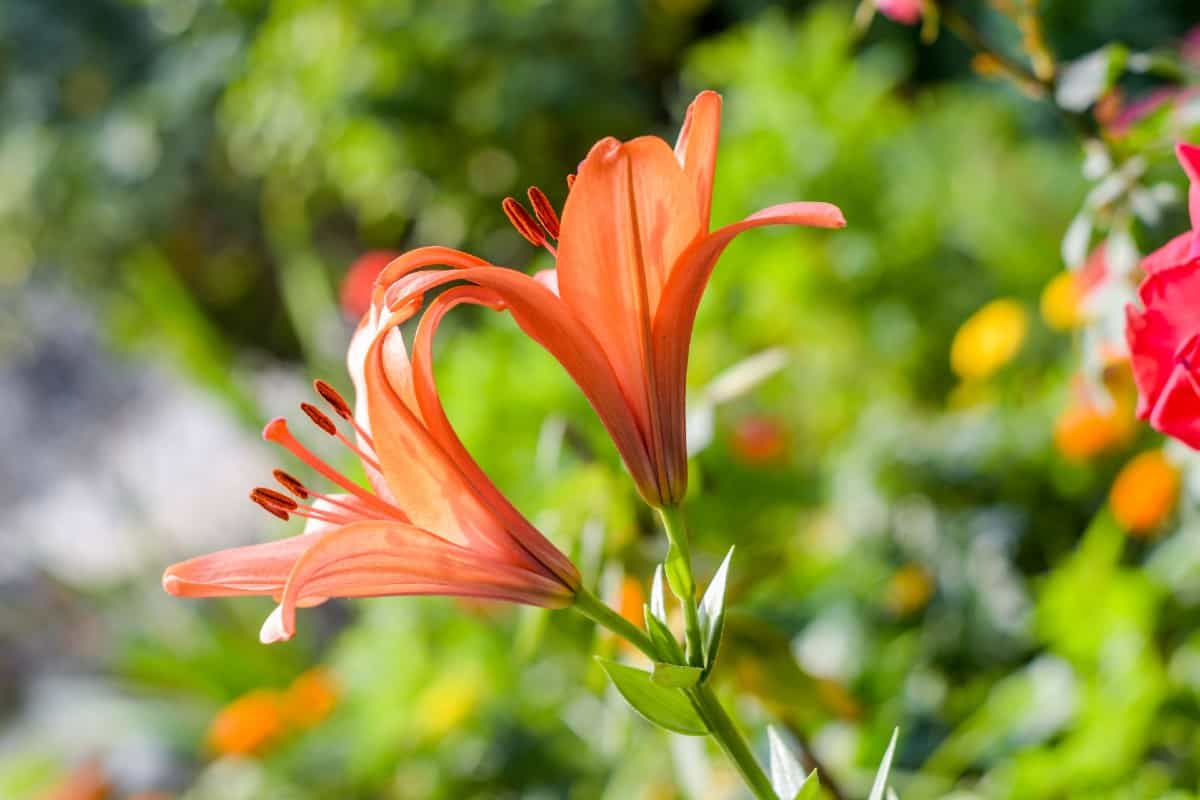
Trumpet Creeper is another plant ideal in both shape and appeal. It’s low-maintenance and easy to care for. A gardener’s most prominent issue with the Trumpet Creeper is that it quickly turns invasive if not appropriately handled.
This flowering plant thrives in both full and partial sun. The only difference is that the full sun allows the plant to produce more flowers. Doing this, in turn, attracts more hummingbirds, so keep it in shade only when necessary.
Coral Bells (Heuchera): Beautiful Foliage and Flowers
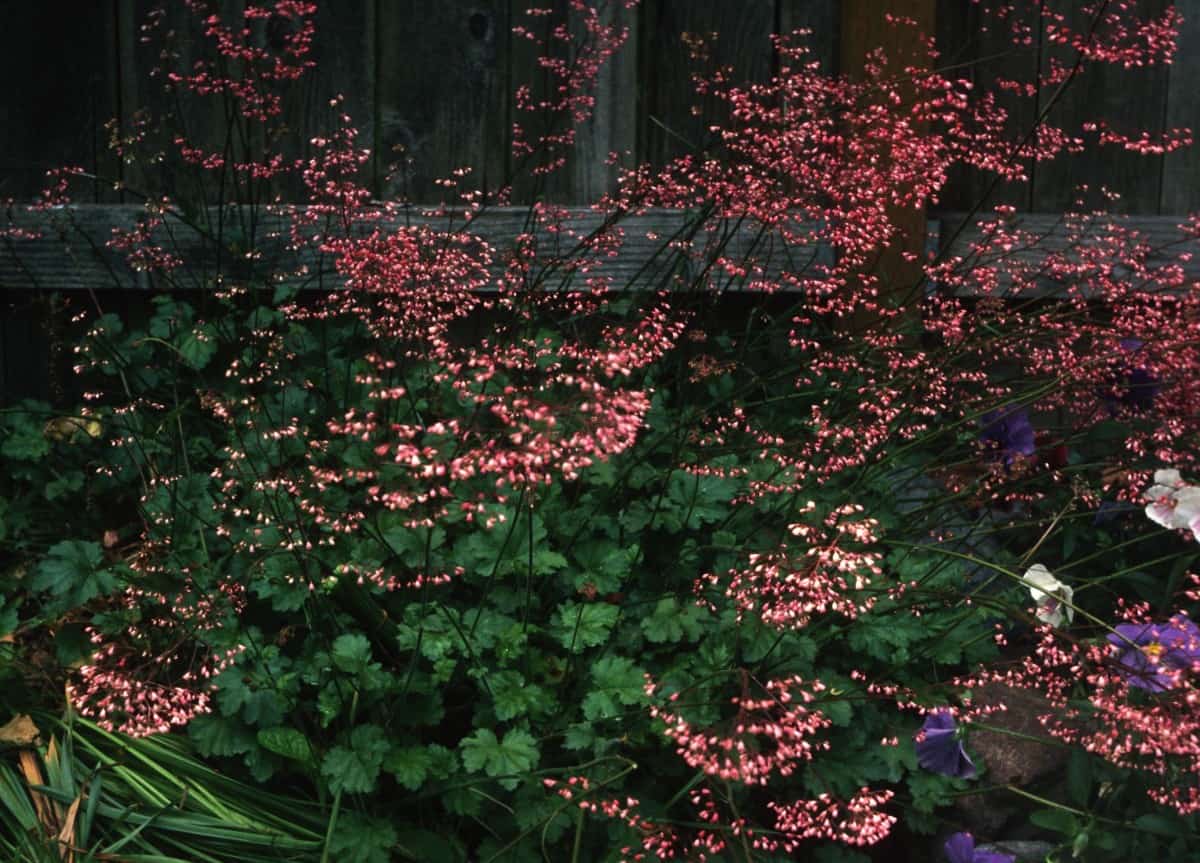
Coral Bells are most commonly noted for their vibrant and colorful leaves. As a result, many gardeners cut away the flowers that grow on these plants in late spring to allow the foliage to grow in its stead.
Yet, hummingbirds love the flowers Coral Bells produce, so leaving them to blossom and flourish is one way to bring out more of these pollinators.
Coral Bells like both full sun and partial shade. They enjoy moist soil that is well-drained and packed with nutrients from compost or organic matter.
Impatiens (Impatiens walleriana)
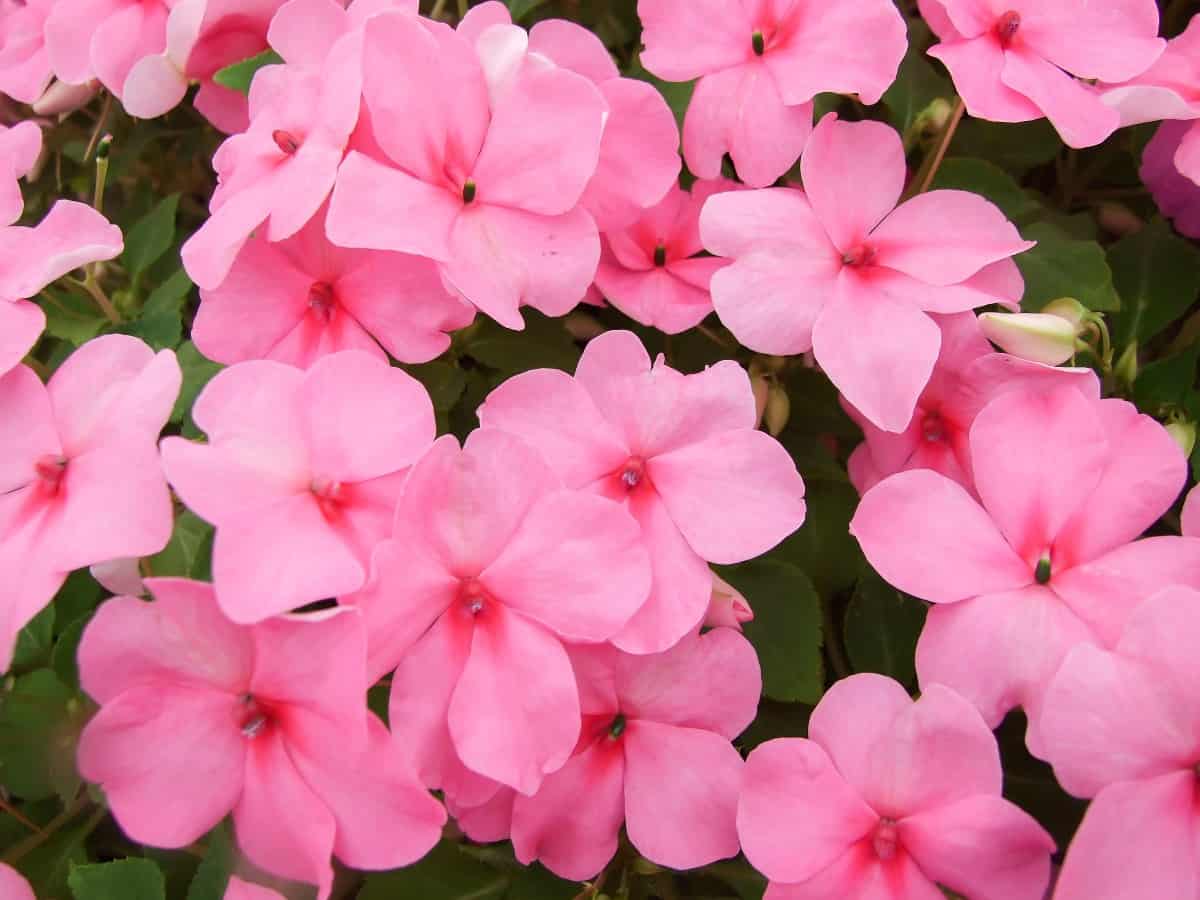
Impatiens makes excellent border plants, as well as easy to grow flowers in container gardens. Their bright colors and shape are the biggest draw for hummingbirds, similar to most of the other flowers on this list.
These flowers need plenty of water each week, at least two inches. Watering them twice a day is also necessary whenever temperatures exceed 85℉. They do especially well when fertilized regularly.
Columbine (Aquilegia): Delicate Flowers Abundant with Nectar
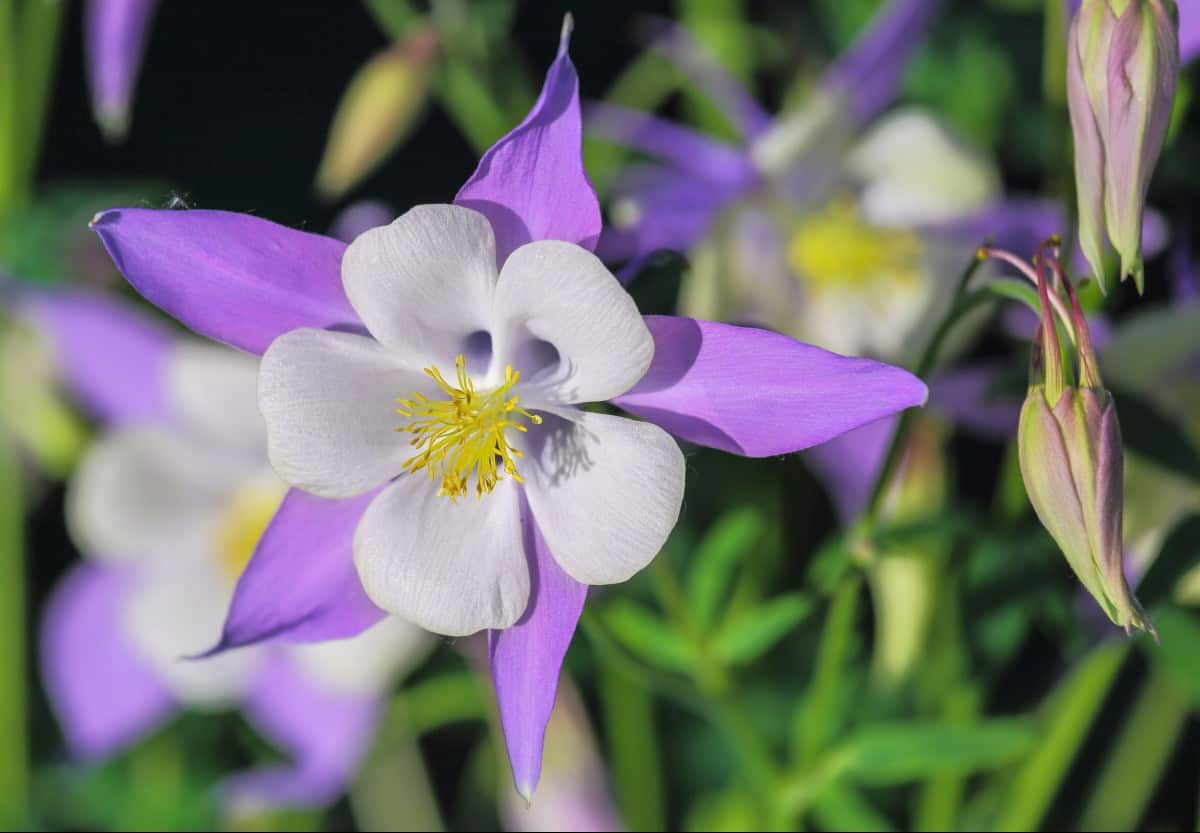
Though Columbine tends to grow in cooler-toned colors, the red center of its spurs is enough to attract hummingbirds. They also abound with nectar, making them an ideal source of nourishment for the tiny creatures, as well as the perfect flowers for honey bees.
These beautiful plants make a gorgeous addition to any garden. The success of Columbine varies depending on location, with the constant being well-drained and moist soil.
When it comes to sunlight, too much sun scorches the delicate petals. Providing a little bit of shade in hotter climates helps ease this issue. In colder areas, laying down a layer of mulch insulates and protects the roots from dropping temperatures.
Phlox (Phlox paniculata)
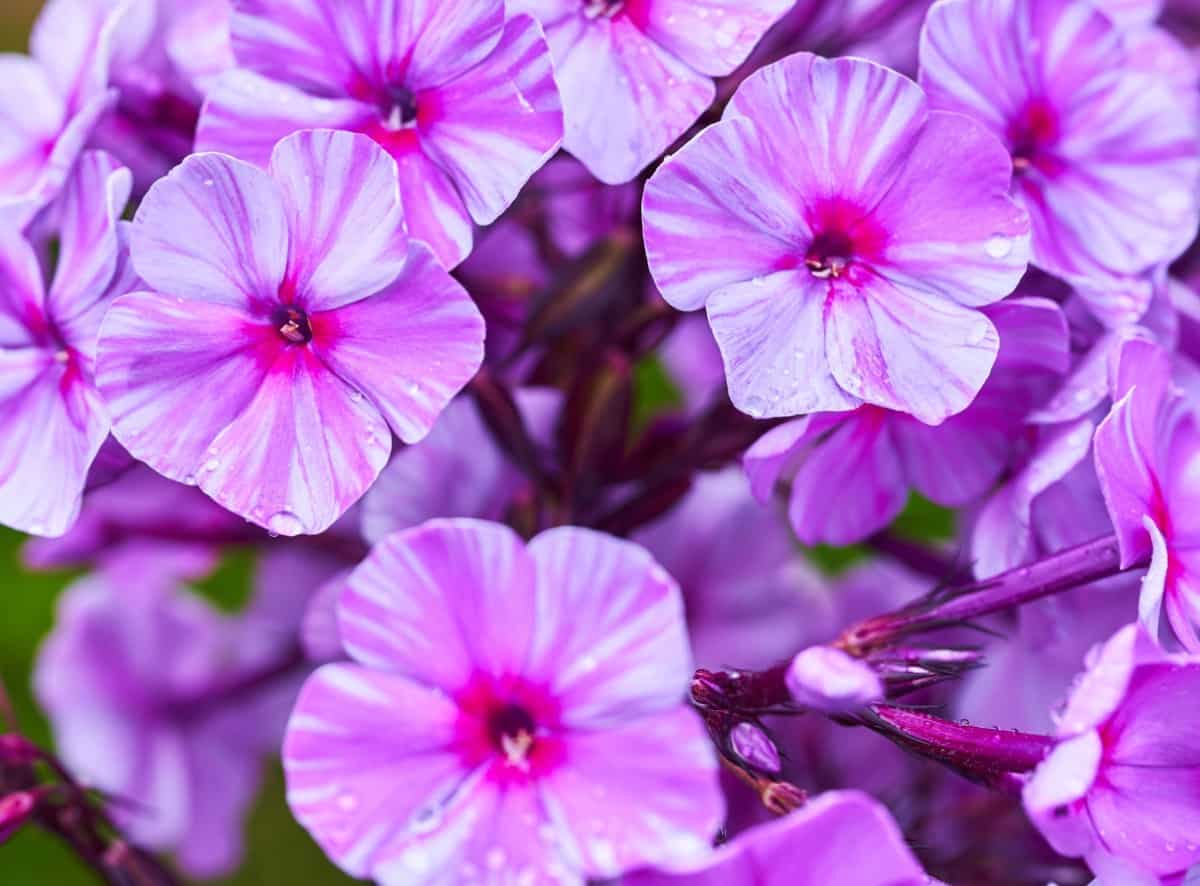
The sweet fragrance of flowers like Phlox is what attracts creatures like bees and butterflies to the plant. Hummingbirds have a relatively poor sense of smell in comparison, which is why they rely so heavily on bright colors to pinpoint nectar-rich plants.
Luckily, Phlox offers both characteristics to lure in numerous pollinators. The plant also pairs well with other hummingbird flowers, such as the Butterfly Bush.
It grows best in full sun and tolerates moderate shade. Too much shade, however, limits the flower growth, reducing its effectiveness as an attractor.
Hardy Fuchsia (Fuchsia magellanica): Tropical Flowers with Stunning Pops of Color
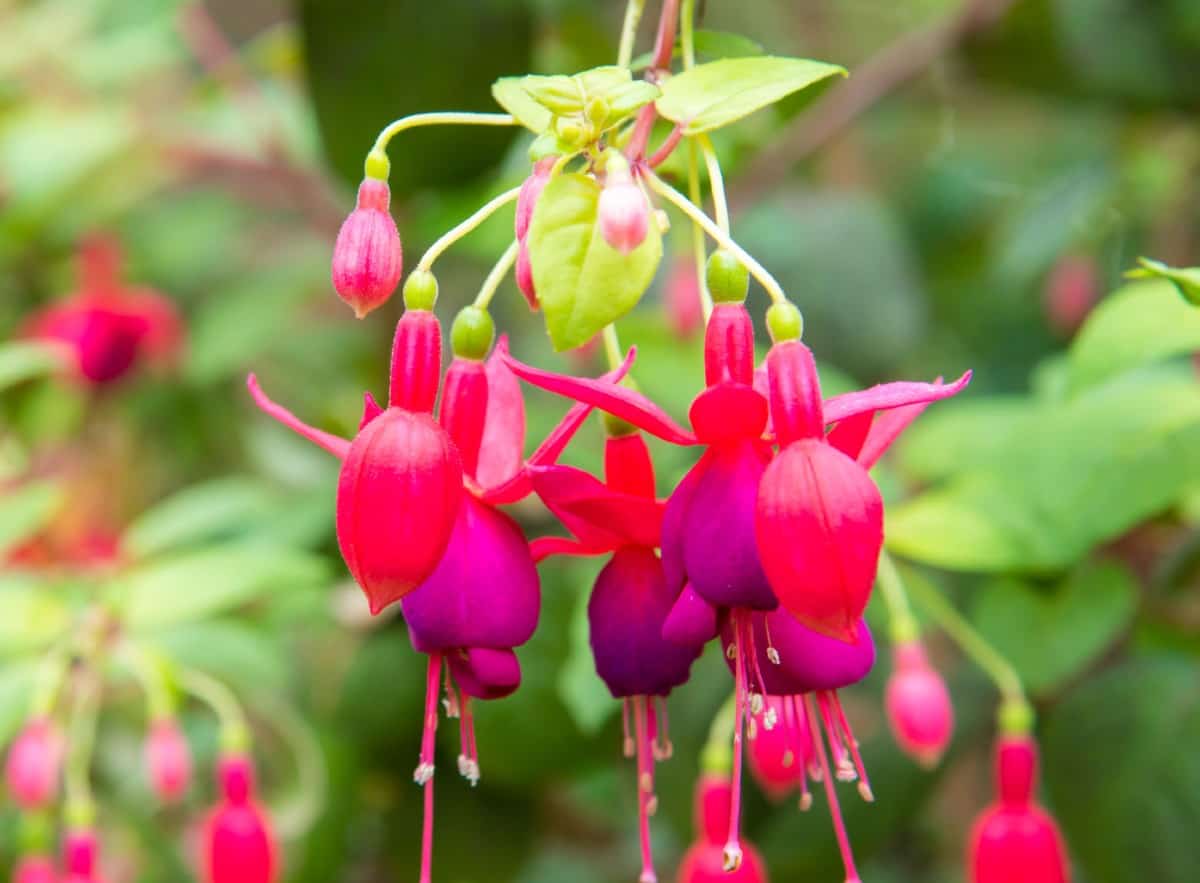
Fuchsias are another beautiful group of plants that not only attract hummingbirds but add incredible appeal to any garden. Native to South America, the stunning pops of color and shapes add a tropical feel to the landscape.
These same factors are what draw hummingbirds to the flower in the first place. These summer-blooming plants grow best in part shade.
When given enough space to grow, they reach widths and heights of up to ten feet across or high. In colder weather, placing a layer of mulch around the base prevents it from freezing and dying out completely.
You should have no trouble locating the ideal specimen for your home and landscape with so many varieties of flowers to choose from. While red flowers attract hummingbirds the most, mixing up the colors a little is also possible when planting specimens with high nectar content.
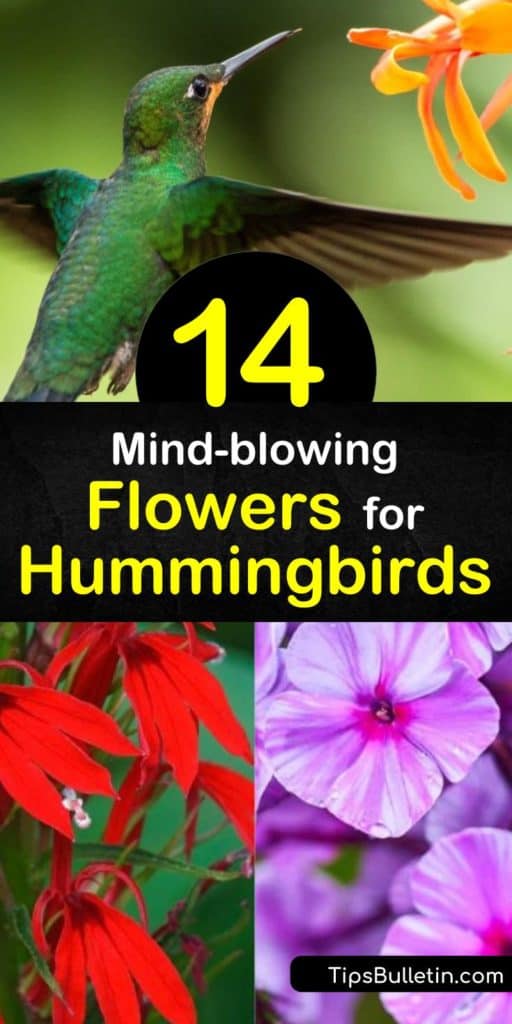
If you found these tips for attracting hummingbirds useful, then please remember to share the best flowers for hummingbirds with everyone you know on Facebook and Pinterest.